Up Next

The thrill of this one came on Saturday, with one of the most enthralling qualifying sessions Formula 1 has ever served up, full-wet, spray hanging heavy in the air while 20 drivers skilfully weaved their missiles between the ever-changing rivers and patches of standing water.
But none more exquisitely than Lewis Hamilton who secured pole from Max Verstappen by the margin of 1.2s, with a lap that Toto Wolff described as ‘other-worldly’.
As for the Styrian Grand Prix race, it was dry, cool and went precisely according to the Mercedes plan. Which was for Hamilton to run unopposed out front and to use Valtteri Bottas, from his position on the second row, to put a sort of strategic scissor movement on Verstappen as the pitstop window opened up, forcing him to pit to retain track position.
As the Honda suddenly loses the extra 160bhp, the Mercedes is still accelerating
Mercedes would then run Bottas long to be on much faster tyres with which to catch and pass the Red Bull before the end, all while Hamilton waltzed serenely away. Not by any more than he needed – and they still weren’t whacking the kerbs as hard as they might despite the changes made to reduce the seriousness of the gearbox sensor issue – but always enough.
Mercedes had the confidence to plan around this as it had a car which was very obviously faster.
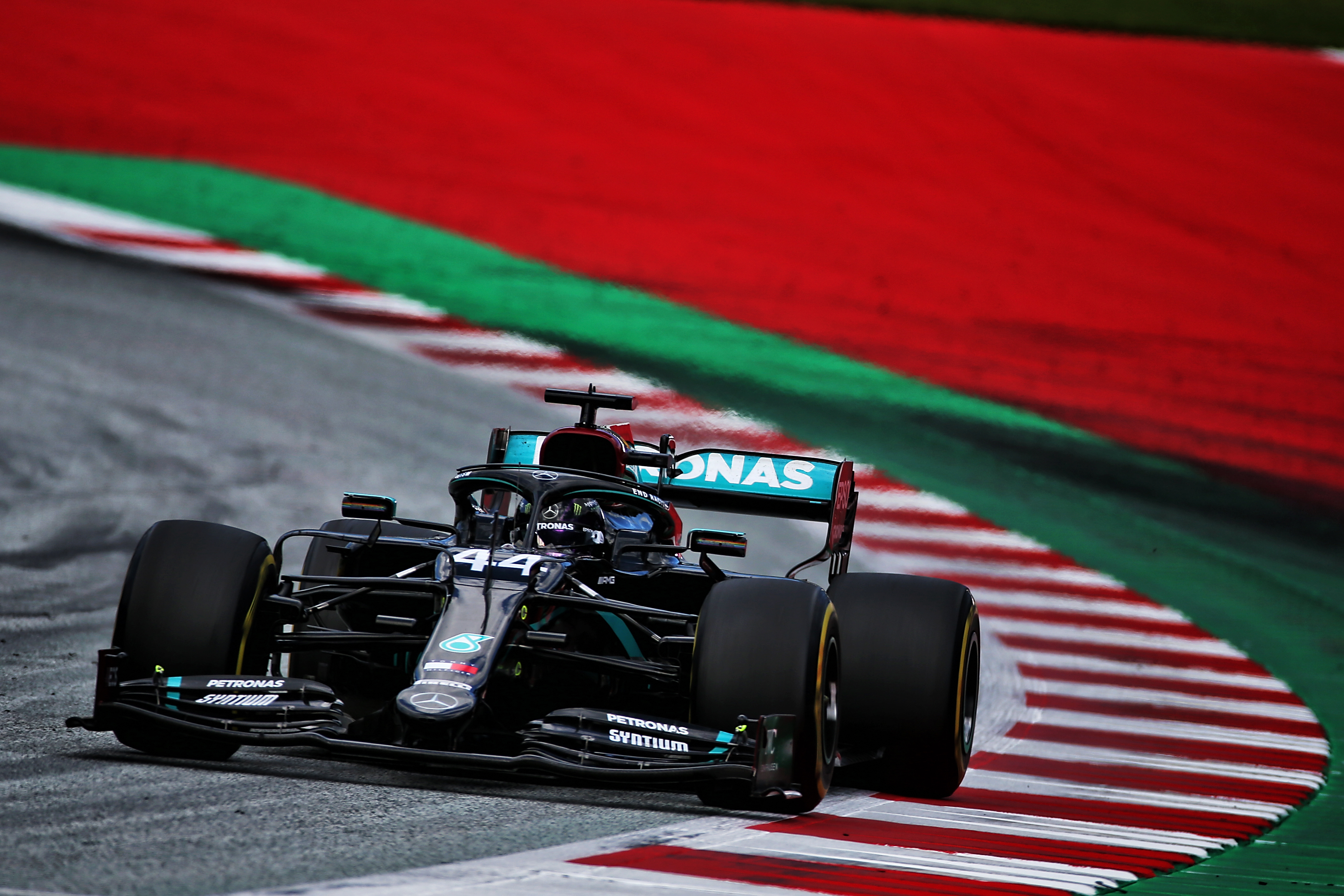
“Ah, we are just too slow,” accepted Verstappen afterwards. “I mean I pushed as hard as I could just to try and stay with Lewis, but yeah, it’s not possible.
“We have some work to do. At the end I could see Valtteri coming and my tyres were pretty dead, so I had some fun fighting with him but I knew he’d come by in the end.
“Up until then for me, it was a really boring race, just seeing Lewis pulling away and I was just trying to do my own pace.”
The Mercedes’ inherent pace advantage at this stage of the season was further bolstered by the demands of the Red Bull Ring track.
Its layout consumes all of the electrical energy that can be produced, one of the few tracks on the calendar where the ERS stops deploying – which happens earlier on the Honda than the Mercedes. So as the Honda suddenly loses the extra 160bhp, the Mercedes is still accelerating. Hence the speed trap figures.
Which in turn led Red Bull to run less rear wing than Mercedes which in further turn ensured the Red Bull ran its tyres harder than the Mercedes.
In the very hot conditions of Friday Mercedes was in trouble on the soft compound – and Verstappen was actually faster. But race day wasn’t hot.
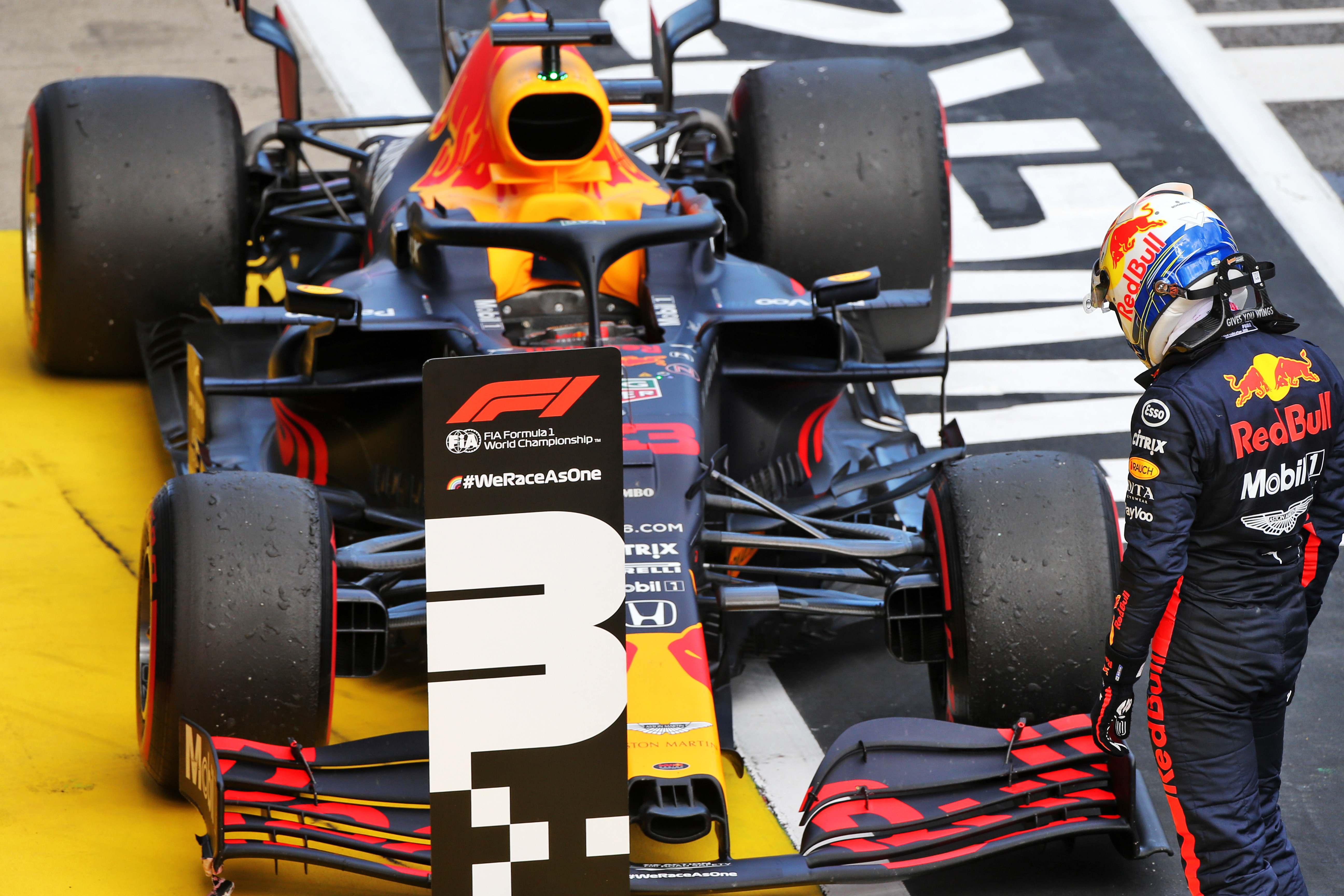
But even thus-compromised, Verstappen finished over a minute clear of Class B at the end. “That kind of shocked me,” he said.
It might have been less than that had a charging Sergio Perez not been brought up short by Alex Albon’s fourth placed Red Bull. There was a time when the pink Mercedes was the fastest car on track as Perez made amends for his lowly 17th place in wet qualifying, but it was at a stage in the race when the positions at the front were settled and those cars weren’t being pushed.
“I’m constantly being monitored, being told how big the gap is. If it’s growing you balance it” :: Lewis Hamilton
When account is taken of the various factors, the Racing Point wasn’t actually Red Bull-fast, but here it was dicing wheel-to-wheel with Albon late in the race, Perez having passed Carlos Sainz Jr’s McLaren along the way with an exquisite around-the-outside move into the fast Turn 6.
Then he tried going down the inside of Albon at Turn 4 and it was almost a repeat of Hamilton-Albon from last week, as they touched wheels on the exit. This time Albon just suffered a little wobble – and it was Perez who came off worse, with damage to his front wing.
This set up an epic gloves-off scrap between him, Lando Norris, Daniel Ricciardo and Lance Stroll in the closing three laps. Rising to the head of it on the last lap – also shades of last week – was the McLaren of Norris, pumped full of painkillers for some sort of trapped nerve in his torso.
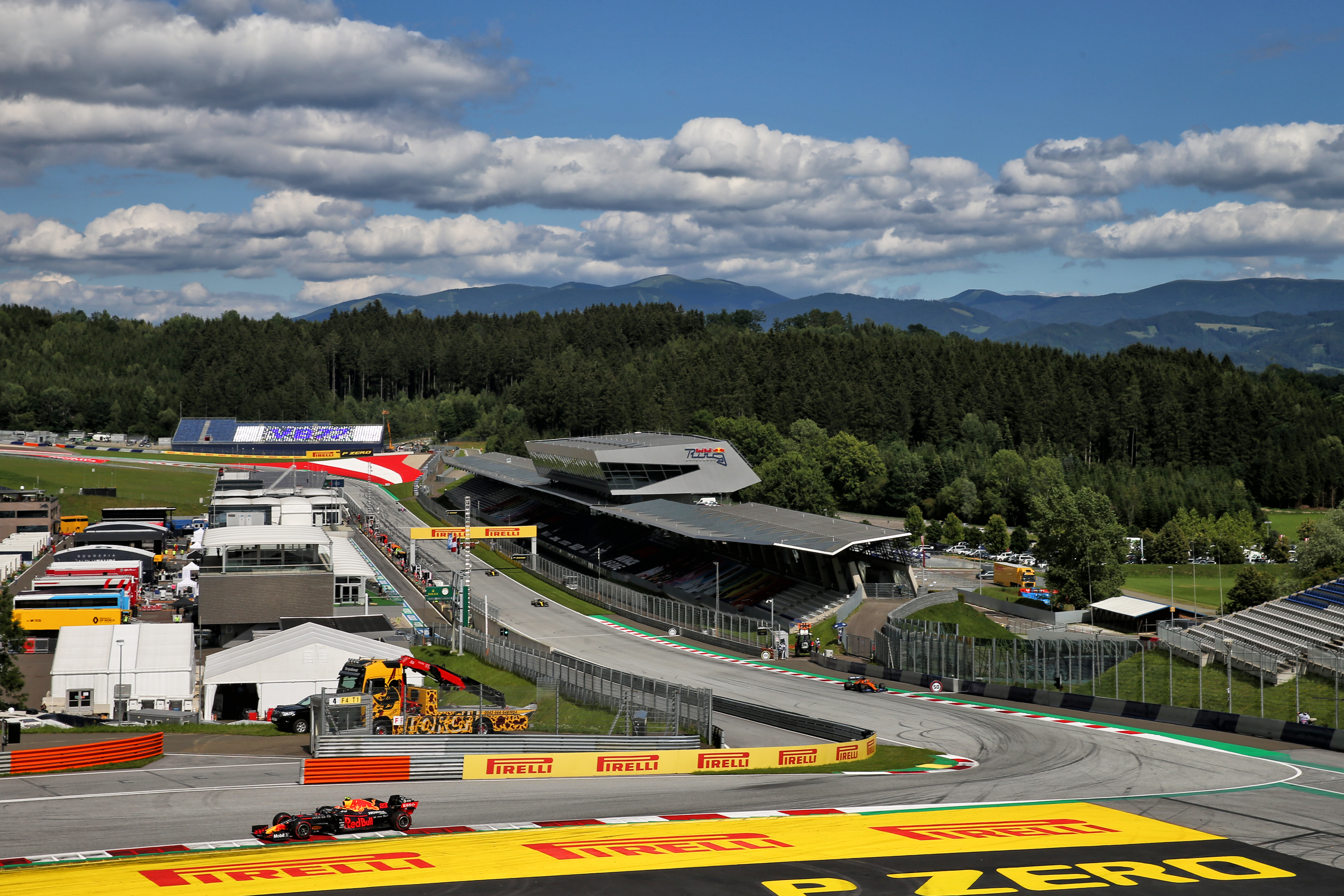
Albon had endured a difficult first half of the race, immediately dropping away from the lead trio, just not comfortable with the car on full tanks and running around 1s off Verstappen’s pace at that stage.
Although he became more competitive once the fuel loads came down and he got onto fresh tyres, the RB16, despite its speed, is clearly still a very demanding drive. Again, both its drivers suffered spins through the practices, bizarrely always at the tight slow Turns 3 and 4, corners at which the car was otherwise the fastest.
“Yes, we’re slightly faster than [Mercedes] there,” said Christian Horner, “a bit slower through the faster corners. But well down on their straightline, which was very impressive. They’ve clearly made big gains through the winter.”
That tricky handling balance – sometimes understeer, other times oversteer, seemingly according to how much initial steering lock is used – played its part in Verstappen further compromising his pace and tyre durability as understeer pulled him wide over the punishing yellow kerbs on the exit of Turn 7. The footplate of the front wing was ripped off, some of it embedding in the bargeboards and causing further damage there, the rest of it damaging part of the rear wing endplate.
“I didn’t notice any difference,” Verstappen said. But the engineers in the Milton Keynes Operations Room did. The aero balance suddenly shifted and the loads reduced. Apart from the time loss this would cause directly, it would also ensure his tyres degraded faster.
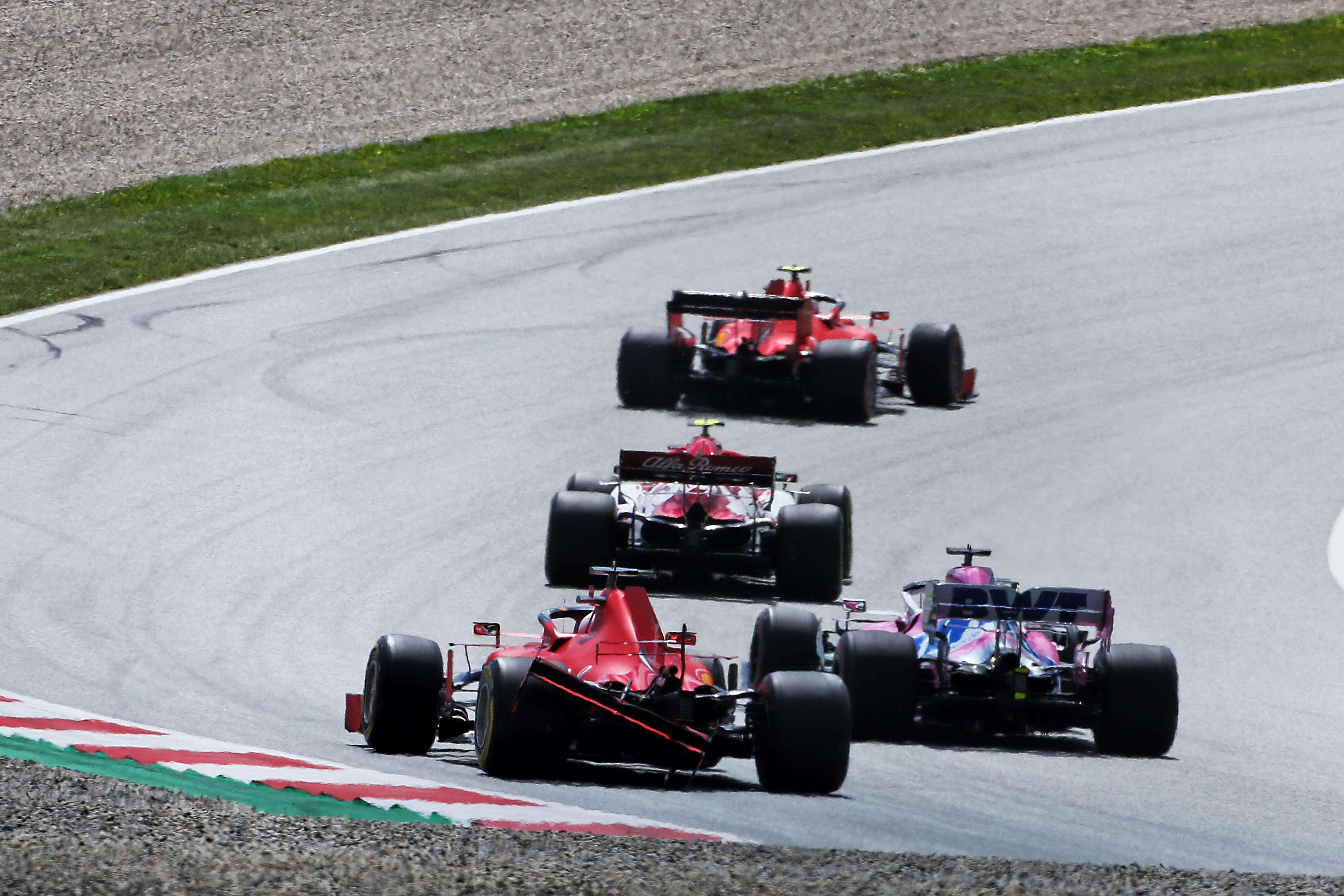
In the early laps after a lap one safety car – for the colliding Ferraris, Charles Leclerc hard into Sebastian Vettel at Turn 3, taking them both out, whoops – Verstappen kept vaguely in touch with the imperious Hamilton for a few laps. But it meant less than it looked.
“With these tyres we are told how far we can go but you can easily shorten the life span with the way you drive,” related Hamilton of the sort of demands this race made.
“So I’m constantly being monitored, being told how big the gap is. If it’s growing you balance it. If you’re four tenths quicker on one lap you perhaps don’t need to do that so you can bring it to two tenths, save the tyres.
“At the beginning of the race there was more pressure. Getting it past 2s wasn’t easy, but then he seemed to fall off, seemed to be getting more deg than me.”
That’s when the critical part of the Mercedes plan came into play, as Bottas edged up to within Verstappen’s undercut range. Verstappen – who’d somehow got it into his head he’d started on mediums and not softs (even though the stripes are visible from the car) – was nonplussed to be called in as early as lap 24 of 71. Now he was on mediums.
Mercedes had kind of hoped it was early enough that Red Bull would choose hards in order to get to the end. But no, Verstappen would now have to get a set of mediums to last the remaining 47 laps. They were going to be pretty ropey in the late stages as Bottas came at him on rubber that would turn out to be 10 laps newer.
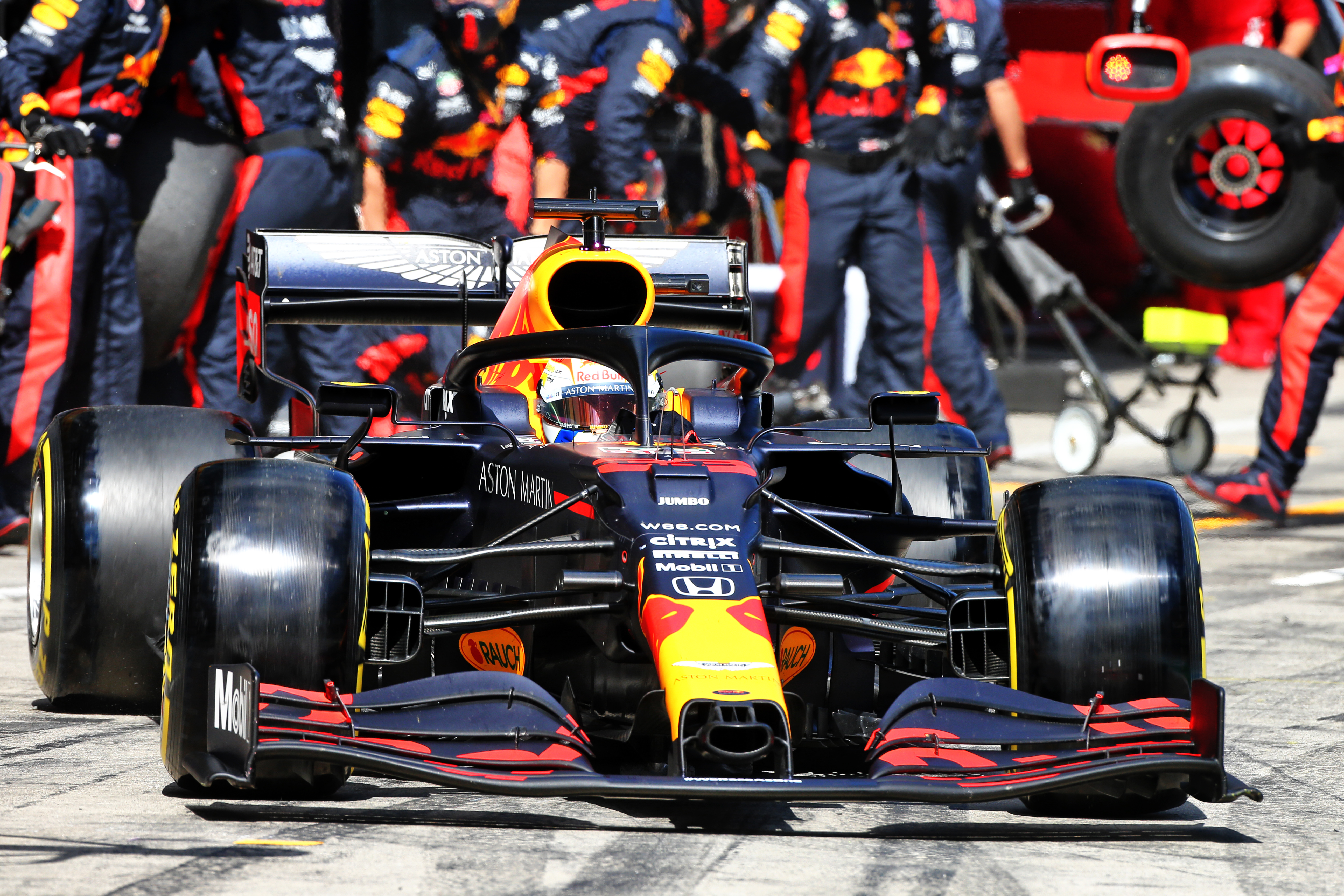
Bottas rejoined 8s behind the Red Bull with 37 laps still to go. An easy task, surely, in such a faster car? Actually trickier than it should have been: “There were many backmarkers and there was actually some of them, it was pretty shocking that sometimes I spent more than a lap with them having blue flags and just not moving away,” complained Bottas. “They were racing each other in front of me and not really caring that they had blue flags.”
So it was that a Pierre Gasly/Antonio Giovinazzi scrap for 14th place kept Bottas off Verstappen’s back for a while. But it was only delaying the inevitable.
On the 66th lap Bottas breezed by under DRS after Turn 3. This is when Verstappen decided to have some fun. He reclaimed the place, slamming down the inside into four and going wheel-to-wheel for much of the following lap – until Bottas made the decisive move into Turn 4 one lap later.
That was the podium set. Verstappen made a free pitstop for a late set of softs with which to attack the fastest lap. But the damage to the Red Bull was such that it couldn’t better the earlier similar attempt by Sainz’s McLaren, delayed terribly at his first pitstop.
Once he’d fended off Perez’s late assault, Albon’s distant fourth was secured. Perez ignored calls to box because of the front wing damage but was walking wounded at the end as he was caught at the penultimate corner of the race by the madly dicing Norris, Stroll and Ricciardo.
As the Mexican ran wide, Norris nipped by for fifth. It was all Perez could do to fend off team-mate Stroll at the line. Ricciardo, having let Stroll through into Turn 3 after fending him off for half the race, had thereby created the opportunity for the inspired Norris to get past them both. Sainz and Daniil Kvyat completed the scorers.
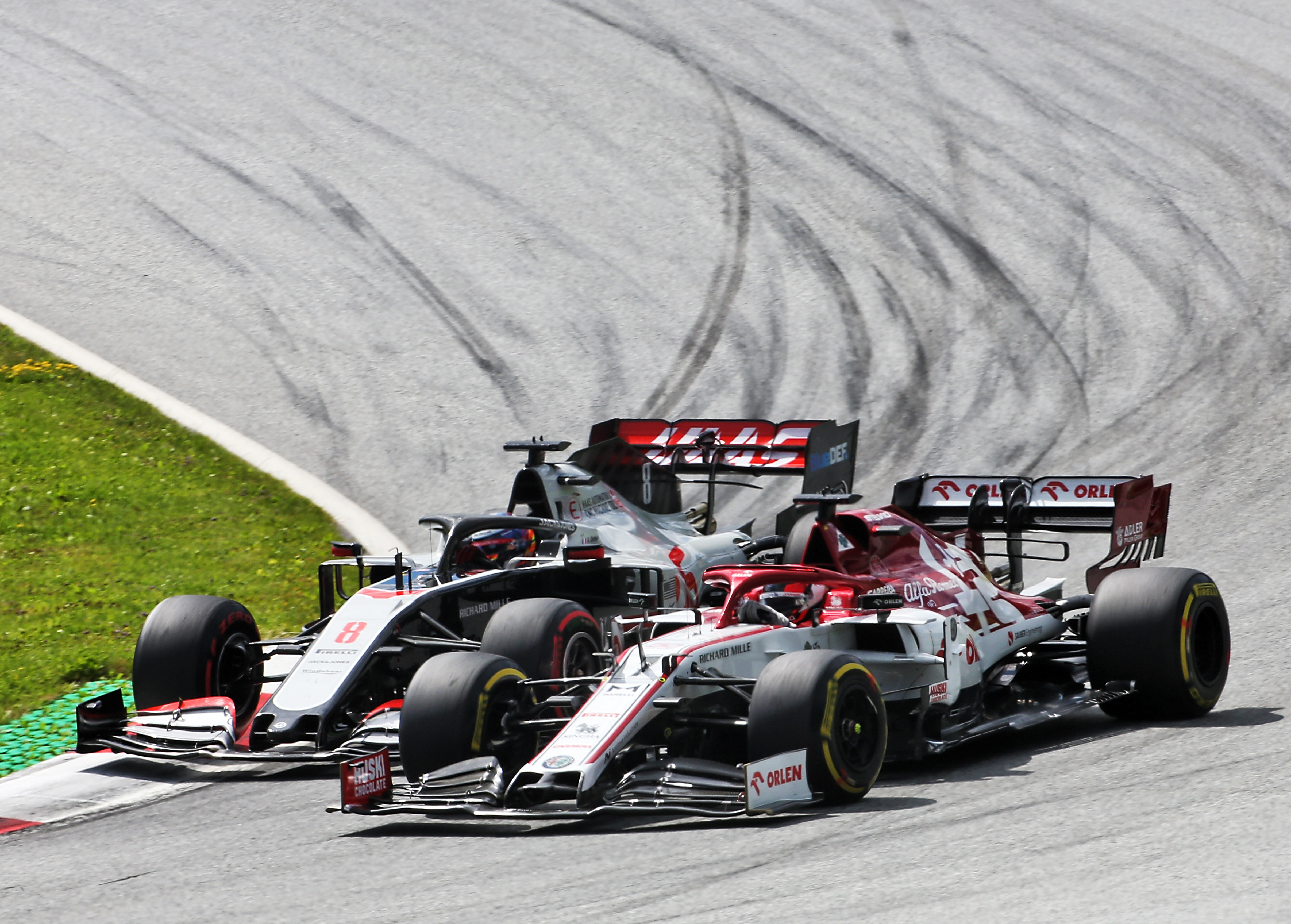
Kimi Raikkonen headed a four-way Alfa/Haas battle from Kevin Magnussen, Romain Grosjean and Antonio Giovinazzi. Gasly finished behind them in an AlphaTauri damaged against Ricciardo’s Renault at the first corner of the race.
George Russell sunk to the back after his superb 12th-place qualifying effort when trying to take his Williams around the outside of Magnussen on the first lap – and instead ran through the gravel trap. The only place he could make up from there was on team-mate Nicholas Latifi. Esteban Ocon got only as far as lap 25 before retiring his Renault, a comedown after his great fifth-fastest wet qualifying lap.
Hamilton therefore bounced back with a calm, measured victory that didn’t really stretch him. Not like the car dancing from puddle to puddle, spray all around, trying to pick out braking points at 200mph stretched him. But he aced it just as surely.






